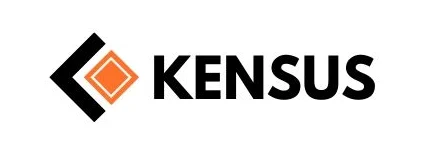Categorization of wagons based on design advancement
Freight wagons can be divided into many categories based on their construction, mechanical specifications, and transport functions. The key differences in the design result from the materials used, welding technology and the type of body, which determines their resistance to dynamic and thermal loads.
Covered wagons
Covered wagons, which are one of the basic types of construction, are equipped with closed bodies made of high-strength steel, which guarantee protection of the transported cargo against weather conditions. They use advanced technologies for sealing structural joints (e.g. elastomeric sealing systems) to protect loads against moisture penetration. Examples of use:
- G series – Standard covered wagons, which are used to transport weather-sensitive cargo (e.g. cement, construction materials), often used in the transport of goods that require constant temperature and humidity.
- H series – Covered wagons for special purposes, equipped with mechanical systems supporting loading and unloading (e.g. pallet trucks, hydraulic lifts).
Open wagons (coal wagons)
Coal wagons are open-body wagons, dedicated to the transport of bulk materials resistant to weather conditions. Their design is based on the body resting on the main frame, the strength parameters of which are optimized for static and dynamic loads.
- E series – Standard coal wagons that are mainly used for transporting bulk materials such as coal, coke or ore. The frame structure based on a load-bearing system made of closed profiles provides resistance to bending and torsion, which is crucial in the case of unevenly distributed loads.
- F series – Coal wagons with automatic gravity discharge systems. These systems are based on the design of unloading flappers, hydraulically or pneumatically controlled, which allows for quick unloading of material without the need for additional external equipment.
Platform
Platform wagons, dedicated to the transport of long or spatial loads, such as pipes, rails or structural elements, are designed to withstand high longitudinal and lateral loads. The use of reinforced profiles and fastening systems (e.g. chain blocks, supports) ensures the stability of the transported load during transport.
- K, O, R series – Platforms of standard design, used for transporting long and spatial loads. Their frames are made of steel profiles with increased corrosion resistance, which ensures durability in long-term operation. These platforms are often equipped with additional fasteners such as anchor brackets.
- L, S series – Specialized platforms, adapted to the transport of containers and vehicles. Equipped with integrated container fastening systems in accordance with ISO standards.
Tank wagons
Rail tankers, designed for the transport of liquids, gases and hazardous materials (ADR/RID), are designed with the highest standards of tightness and safety. The tanks are made of stainless steel or composite materials that provide resistance to corrosion and the influence of aggressive chemicals.
- Z series – Tankers specially adapted to the transport of liquid materials with a low flash point, such as petrol, ethanol or LPG. The use of double walls and thermal insulation made of composite materials guarantees the maintenance of appropriate temperature parameters during transport.
- Zaes series – Tankers for the transport of hazardous materials such as acids, alkalis and liquefied gases, which require special certificates of compliance with ADR and RID standards. Each tank is equipped with safety valves and emergency unloading systems.
Special wagons
Specialized freight wagons, designed for the transport of cargo of unusual dimensions or requiring special transport conditions, are designed to order taking into account specific utility requirements.
Open-top railcars (T Series) – Designed to transport materials that require loading from above, such as scrap steel, mineral raw materials or industrial machinery. Hydraulic or pneumatic systems allow full automation of the loading and unloading process.
Refrigerated railcars (Series I) – Equipped with cooling systems based on high- capacity chillers that ensure a stable temperature is maintained during the transport of sensitive products such as foodstuffs or pharmaceuticals.
Technical aspects of freight wagon construction
The wagon chassis is a key load-bearing part, designed to carry static and dynamic loads.
The frame transfers the forces resulting from the weight of the body and the load to the
wheelsets. The running gear system is based on solid axle castors equipped with roller
bearings, guaranteeing minimal rolling resistance. The spring system based on coil springs
and hydraulic shock absorbers is responsible for shock reduction and traction stability.
The body of the wagon depends on the cargo being transported. In coal wagons, the body has an open, steel structure, with reinforced lateral rigidity, which facilitates the loading of loose raw materials. The body of the tankers is a tank made of corrosion-resistant materials, with a double wall for thermal insulation and protection of the transport of hazardous materials.



